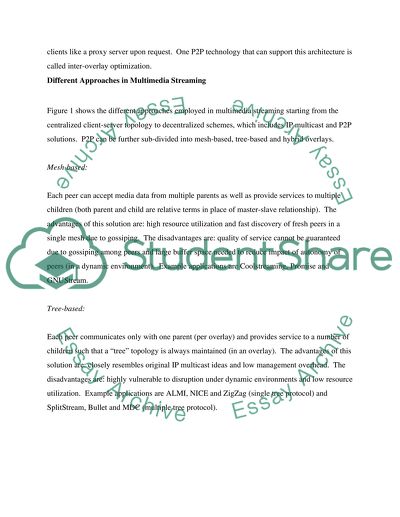Cite this document
(“Peer To Peer Multimedia Streaming Essay Example | Topics and Well Written Essays - 2500 words”, n.d.)
Peer To Peer Multimedia Streaming Essay Example | Topics and Well Written Essays - 2500 words. Retrieved from https://studentshare.org/information-technology/1554293-project-name-peer-to-peer-multimedia-streaming-using-caching-service
Peer To Peer Multimedia Streaming Essay Example | Topics and Well Written Essays - 2500 words. Retrieved from https://studentshare.org/information-technology/1554293-project-name-peer-to-peer-multimedia-streaming-using-caching-service
(Peer To Peer Multimedia Streaming Essay Example | Topics and Well Written Essays - 2500 Words)
Peer To Peer Multimedia Streaming Essay Example | Topics and Well Written Essays - 2500 Words. https://studentshare.org/information-technology/1554293-project-name-peer-to-peer-multimedia-streaming-using-caching-service.
Peer To Peer Multimedia Streaming Essay Example | Topics and Well Written Essays - 2500 Words. https://studentshare.org/information-technology/1554293-project-name-peer-to-peer-multimedia-streaming-using-caching-service.
“Peer To Peer Multimedia Streaming Essay Example | Topics and Well Written Essays - 2500 Words”, n.d. https://studentshare.org/information-technology/1554293-project-name-peer-to-peer-multimedia-streaming-using-caching-service.


